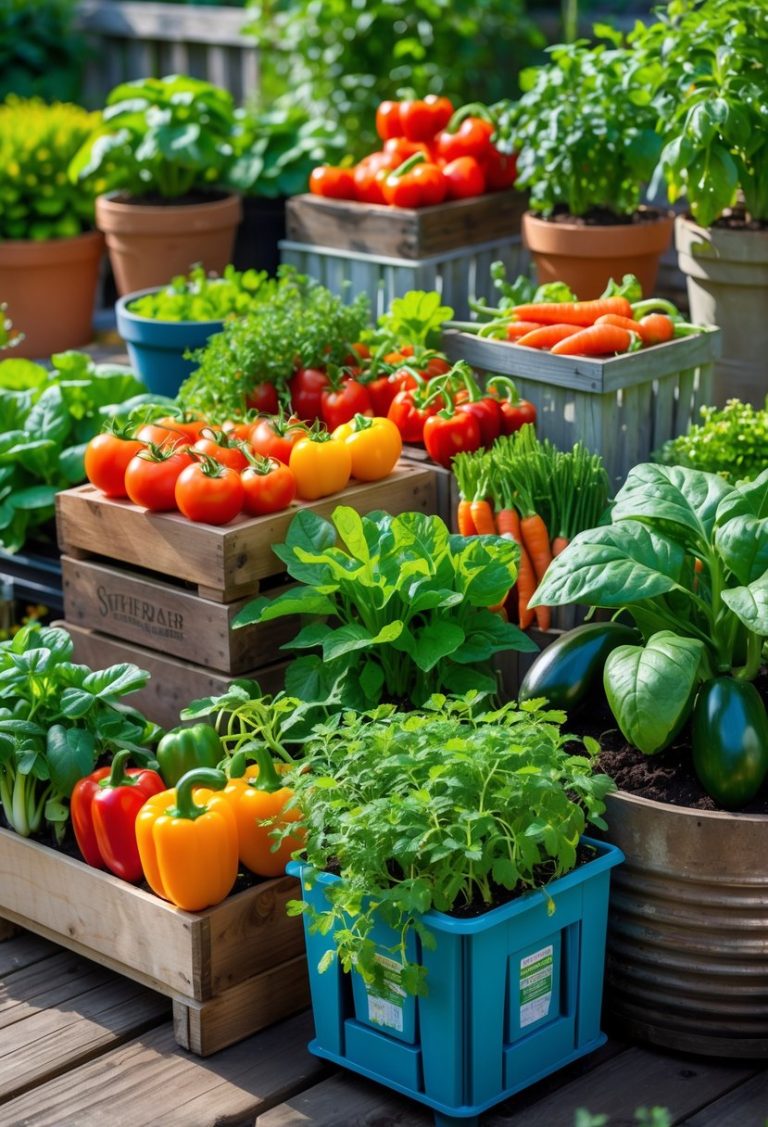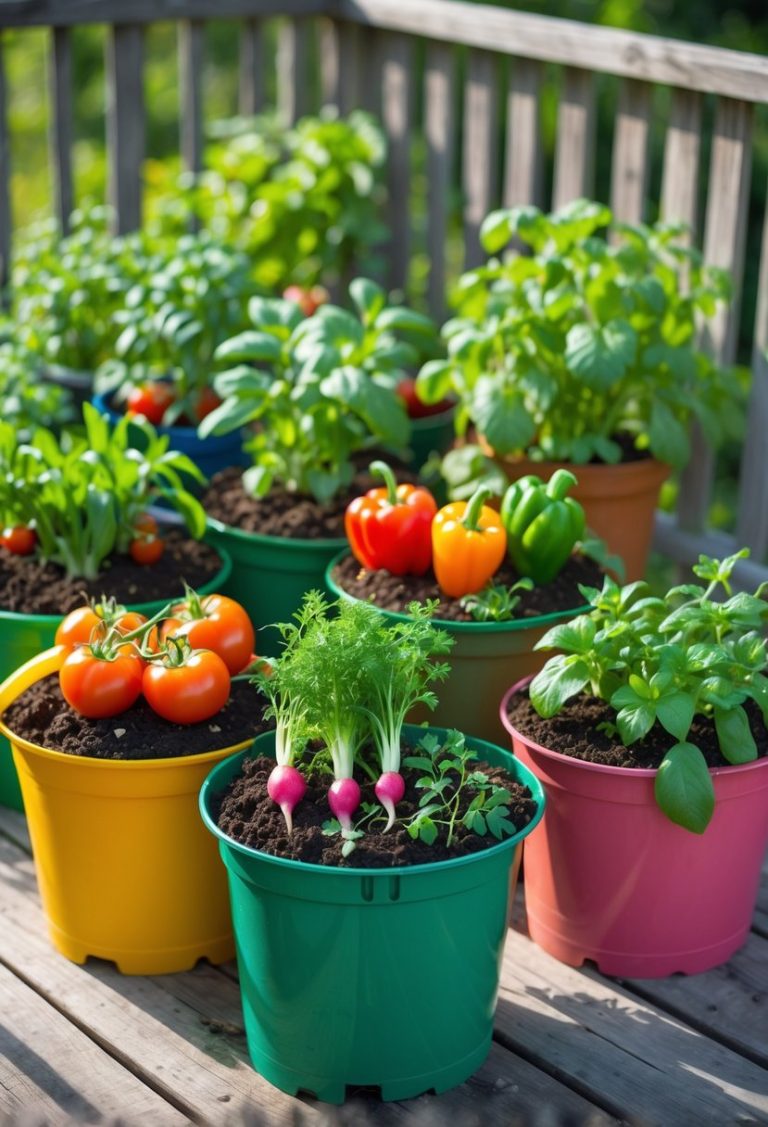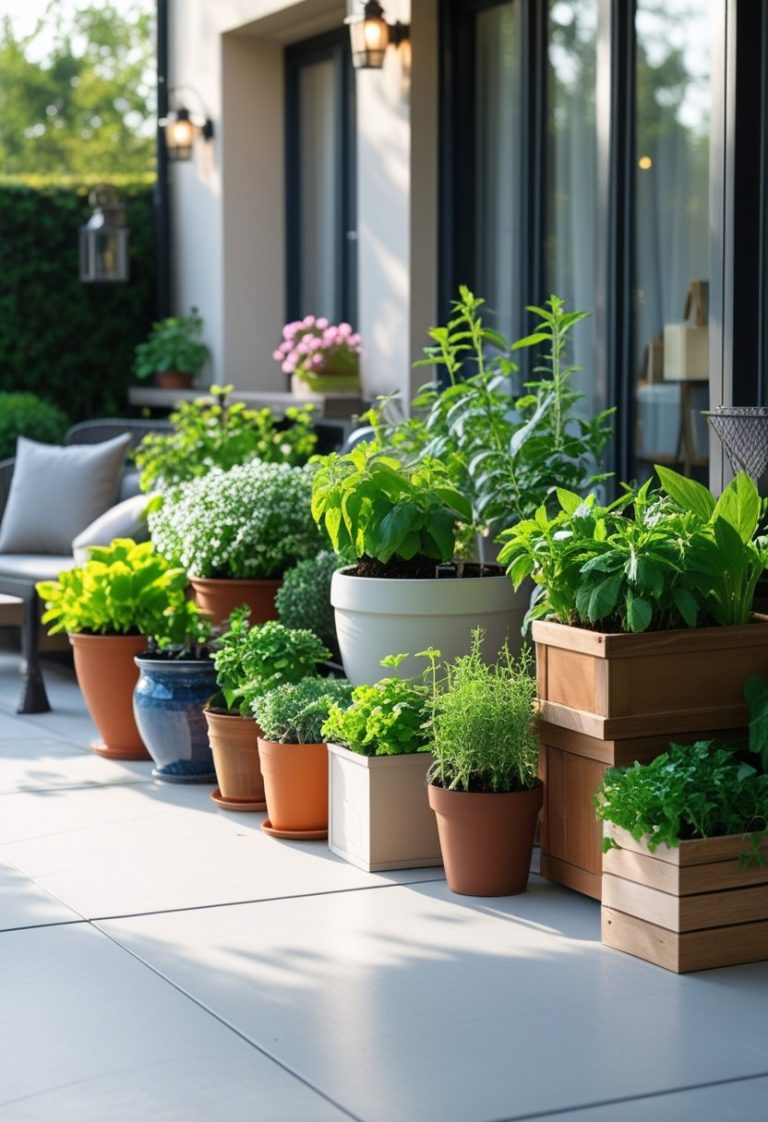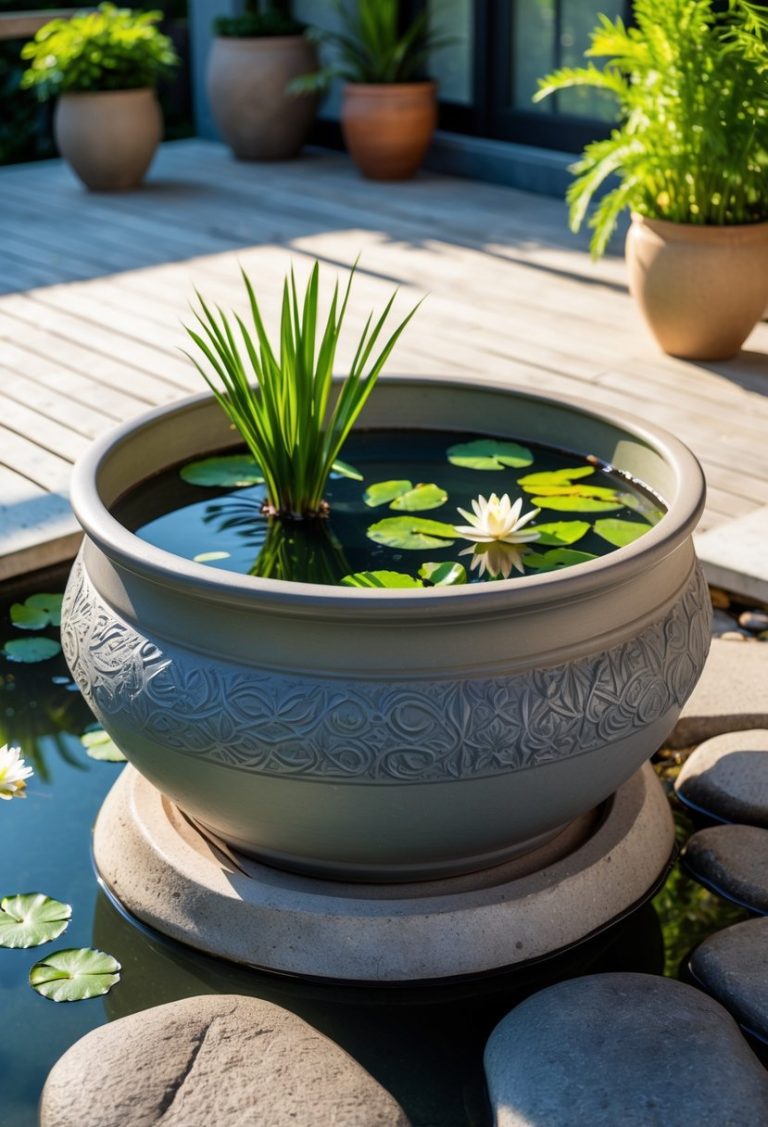Cucumber Container Gardening Essentials for Healthy, High-Yield Plants
Growing cucumbers in containers is a smart way to enjoy fresh veggies even without a yard. You can successfully grow cucumbers in pots if you choose the right size and provide good soil and proper care. This method works well on patios, balconies, or small spaces.

To get started, use a container that holds at least 5 gallons of soil. Cucumbers need warmth, so plant only when the soil temperature is at least 60°F. Using a mix of potting soil and compost helps the plants grow strong and healthy.
With the right setup, you can grow vining or bush types of cucumbers easily. Knowing the right pot size, soil mix, and care helps you get better yields from your container garden.
Key Takeways
- Use a large enough container with proper soil for growing cucumbers.
- Plant cucumbers when the soil temperature is warm enough.
- Regular care and the right growing conditions improve cucumber harvests.
Getting Started With Cucumber Container Gardening

To grow cucumbers successfully in containers, you need the right variety, a suitable container, and the proper tools. These basics will help you set up a healthy environment and make your cucumber gardening easier.
Choosing the Right Cucumber Varieties
For container gardening, you should pick cucumber types that do well in limited space. Look for bush or dwarf varieties since they do not grow long vines and stay compact.
Vining cucumbers need more room and support, which can be hard to manage in pots. Bush types will grow well and give you a good harvest in smaller spaces.
Some popular container-friendly varieties include ‘Bush Champion,’ ‘Patio Snacker,’ and ‘Spacemaster.’ These grow slower and produce enough fruit for a home garden.
Starting with seedlings can speed up your first harvest. If planting seeds, sow them about 1 inch deep in the soil.
Selecting Suitable Containers
Choose containers that hold at least 5 gallons of soil. This size offers enough room for the roots to grow properly.
Containers like plastic pots, fabric grow bags, or even 5-gallon buckets work well. Make sure your pot has good drainage holes to avoid water buildup, which can cause root rot.
The container should be sturdy and able to hold soil without drying out too quickly. Dark-colored containers warm up the soil faster, helping cucumbers grow in cooler weather.
Place your container where it will get at least 6-8 hours of sunlight a day for the best yield.
Essential Tools and Equipment
To start cucumber container gardening, gather these tools:
- High-quality potting mix: Use light, well-draining soil, not garden dirt.
- Trowel or small shovel: For planting and loosening soil.
- Watering can or hose with a gentle spray: Keep the soil moist but avoid waterlogging.
- Support structure: A small trellis or stakes for supporting vines if you use vining varieties.
- Fertilizer: Balanced, slow-release or liquid fertilizer to feed plants every 2-3 weeks.
Having these items ready makes planting and caring for your cucumbers easier. Proper tools help you keep plants healthy and productive.
Soil Requirements and Preparation
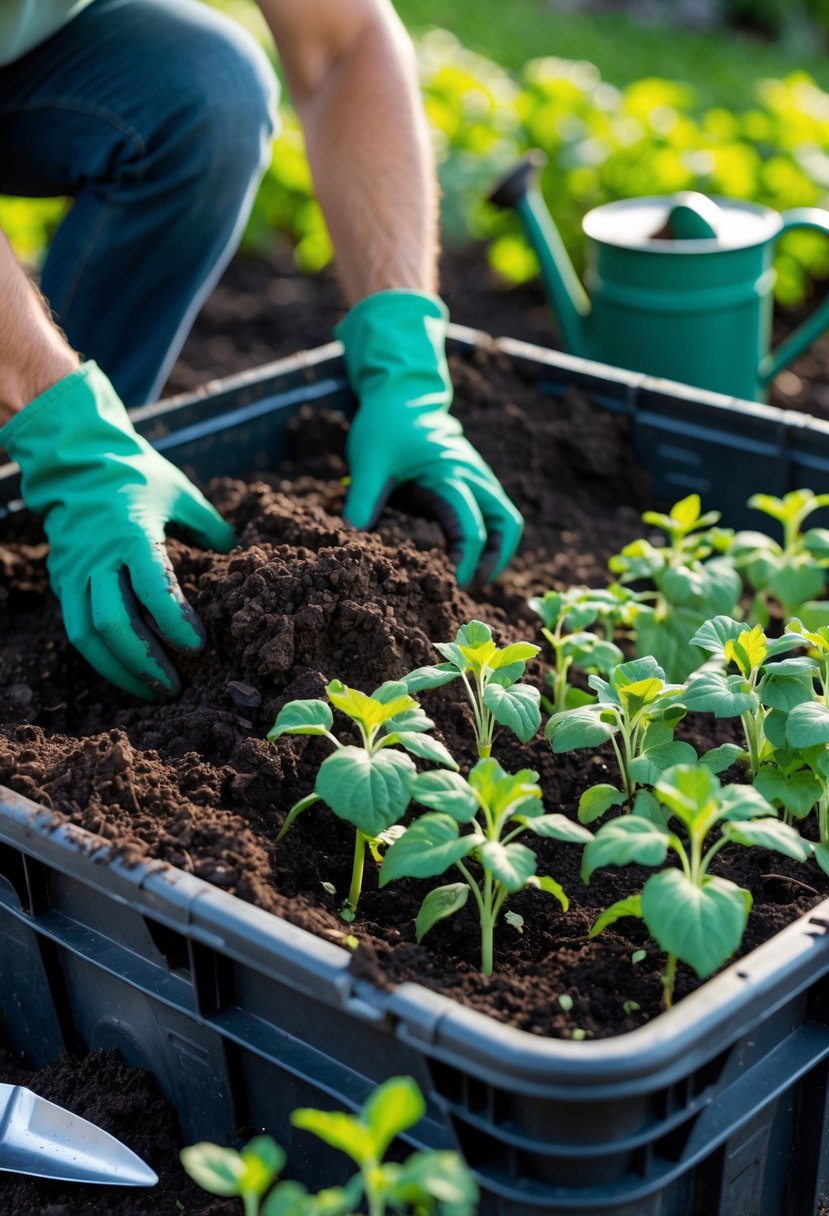
Healthy soil is key to growing cucumbers in containers. You need a mix that drains well but holds moisture and has the right nutrients to support growing vines. These elements help your cucumber plants thrive and produce well.
Selecting the Optimal Potting Mix
Choose a light, well-draining potting mix made for container gardening. Avoid heavy garden soil that can hold too much water and cause root rot. Your mix should contain components like peat moss, coconut coir, or compost to retain moisture while allowing air flow.
Add materials for drainage such as perlite or vermiculite. These prevent soil from becoming waterlogged. A good container soil mix keeps roots moist but not soaked, which is crucial for cucumbers.
Use a potting mix with a balanced pH, around 6.0 to 7.0, to suit cucumber plants. Warm the soil mix in the sun for a day or two before planting to help seeds or seedlings get off to a strong start.
Soil Nutrition and Amendments
Cucumbers are heavy feeders, so your soil needs enough nutrients to support their rapid growth. Incorporate organic compost or well-aged manure into your potting mix at about a 3:1 ratio (three parts potting soil to one part compost).
Focus on balanced nutrients: cucumbers require plenty of nitrogen (N) for leaf growth, phosphorus (P) for roots and flowers, and potassium (K) for fruit development. You can add a slow-release fertilizer or a liquid feed every two weeks during the growing season.
Make sure the soil stays consistently moist, but not soggy. Dry soil stresses plants and reduces yield. Mulch lightly on top to help keep soil moisture steady in your container.
Planting and Growing Techniques

Growing cucumbers in containers requires careful attention to soil, space, and plant support. Proper seed starting, supporting vertical growth, and watering routine will help your plants thrive and produce well.
Sowing Seeds and Transplanting Seedlings
Start by using a high-quality potting mix, not garden soil, to avoid compacted roots. Plant cucumber seeds about ½ inch deep. Space seeds or seedlings so each plant has enough room to grow, usually one per container or at least 12 inches apart in larger pots.
If you start indoors, transplant seedlings when they have 2–3 true leaves. Harden them off by gradually exposing them to outdoor conditions for a week before planting in containers. Choose a compact cucumber variety to save space and improve yields.
Avoid overcrowding. If multiple seeds sprout in a pot, thin to the strongest plant so it has enough room for roots and leaves to grow.
Supporting Vertical Growth
Cucumbers need support to grow well in containers because vines can get heavy. Use a sturdy trellis, cage, or stakes to keep vines off the soil. This saves space and helps leaves get more sunlight.
Attach vines gently to the support as they grow, using soft ties or clips. This prevents damage and keeps the plant stable. Growing cucumbers vertically also improves air circulation, reducing disease risks.
Aim for a trellis height of about 5 to 6 feet, depending on your cucumber variety. Make sure the support is well anchored in the pot to hold up the growing vines.
Watering Best Practices
Cucumbers need consistent moisture but not soggy soil. Water your container regularly, aiming to keep the soil evenly moist. Check moisture often by feeling the top inch of soil—if dry, water.
Use containers with drainage holes to prevent water buildup. Morning watering is best to reduce evaporation and allow leaves to dry before evening.
Avoid overhead watering that wets leaves, which can cause diseases. Instead, water at the base of the plant. Adding mulch on top of the soil can help keep moisture in and reduce how often you need to water.
Care and Maintenance

To keep your cucumbers healthy in containers, you need to focus on feeding them well and protecting them from common pests and diseases. Proper care helps ensure steady growth and good fruit production.
Fertilizing Strategies
Your cucumbers need plenty of nutrients because they are heavy feeders. Use a high-quality potting mix that already contains some nutrients. Early in the growing season, add a nitrogen-rich compost or fertilizer to support strong leaf and vine growth.
During fruiting, switch to a balanced fertilizer with equal parts nitrogen, phosphorus, and potassium. Feed your plants every two weeks to keep the soil rich in nutrients. Avoid over-fertilizing, which can cause too much leaf growth and fewer cucumbers.
Make sure your container soil drains well but stays moist after each feeding. Consistent moisture helps your plants absorb nutrients effectively.
Managing Pests and Diseases
Watch for common pests like aphids, cucumber beetles, and spider mites. Check your leaves regularly for small insects or sticky residue. You can remove pests by spraying water or using insecticidal soap.
Fungal diseases like powdery mildew can develop if leaves stay wet too long. Water your cucumbers at the soil level to avoid wetting foliage and keep good air circulation around plants.
Remove any dead or yellow leaves to reduce disease risks. Keeping your containers clean and monitoring your plants often will help your cucumbers stay healthy.
Harvesting and Troubleshooting

Successful cucumber container gardening depends on knowing when to pick your cucumbers and how to manage common problems. Paying attention to fruit size and plant health will help you get the best results.
Signs of Ripeness and Harvest Methods
You can tell cucumbers are ripe when they reach 6 to 8 inches long, depending on the variety. The skin should look firm and dark green with no yellowing or soft spots. If the skin turns yellow, the cucumber is overripe and may taste bitter.
Use a sharp pair of scissors or garden shears to cut cucumbers from the vine. Avoid twisting or pulling, which can damage the plant. Check your container plants every 2 to 3 days during peak season to pick fruits early and encourage more growth.
Harvesting regularly also prevents cucumbers from becoming oversized or seedy. Store picked cucumbers in a cool, dry place or the refrigerator to keep them fresh longer.
Common Container Gardening Issues
In containers, cucumbers can face problems like poor drainage, inconsistent watering, and nutrient deficiencies. Use pots with drainage holes and well-draining soil to avoid root rot.
Watch for signs of stress such as yellowing leaves or stunted growth. These can be caused by underwatering or overwatering. Consistent moisture is key—you want soil to be damp but not soggy.
Pests like aphids or spider mites may be less common in containers but can still appear. Inspect leaves regularly and remove pests by hand or use insecticidal soap if needed.
Feeding your plants with a balanced fertilizer every 2-3 weeks ensures healthy growth and good fruit production. Support bush cucumber varieties with small cages or stakes to keep fruit off the soil and prevent damage.
Frequently Asked Questions

You need the right container size and suitable cucumber types to grow successfully in pots. Supporting your plants well and using the right soil will also help them thrive. Growing cucumbers indoors requires specific care and attention.
What are the optimal container sizes for cultivating cucumbers?
Use containers at least 12 inches deep. The diameter should be between 14 and 24 inches depending on the cucumber type. Larger containers give roots enough room to grow.
Which cucumber varieties are most suitable for container growth?
Bush varieties work best for containers. They stay compact, usually 2 to 3 feet wide, and produce 12 to 20 fruits. Vining types can be used but need more space and support.
How can you effectively support cucumbers growing in pots with trellises?
Place a sturdy trellis in your container early on. Secure vines gently to the trellis as they grow. This prevents damage and helps the plant get enough air and sunlight.
What is the best method to grow cucumbers vertically in pots?
Train the vines upward along a trellis or cage. Tie stems loosely with soft ties to avoid breaking. This saves space and encourages healthier fruit production.
What soil composition is ideal for growing cucumbers in containers?
Use rich, well-draining soil with organic compost mixed in. The soil should stay moist but not soaked. Good drainage prevents root rot and helps nutrient uptake.
Can cucumbers be successfully grown in pots indoors, and if so, how?
Yes, but you need strong grow lights for at least 6 to 8 hours a day. Keep temperatures between 70 to 85 degrees Fahrenheit. Make sure your pots have drainage holes and water consistently.

